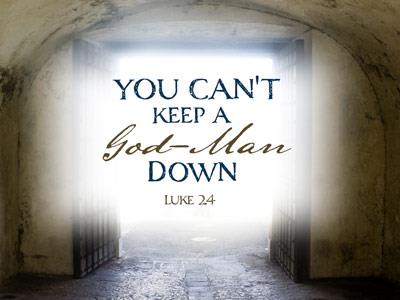-
Come Along And Walk With Him
Contributed by Victor Yap on Jun 15, 2022 (message contributor)
Summary: Emmaus
COME ALONG AND WALK WITH HIM (LUKE 24:13-35)
https://bible.ryl.hk/web_en Grammar Bible (English)
https://bible.ryl.hk/web_Bah Tatabahasa Alkitab (Indonesian)
https://bible.ryl.hk/web_Esp Biblia de Gramática (Spanish)
https://bible.ryl.hk/web_Tag Gramatika Bibliya (Filipino)
https://bible.ryl.hk Chinese Bible (Chinese)
A clergyman was walking down the street when he came upon a group of about a dozen boys, all of them between 10 and 12 years of age. The group surrounded a dog. Concerned lest the boys were hurting the dog, the clergyman went over and asked “What are you doing with that dog?”
One of the boys replied, “This dog is just an old neighborhood stray. We all want him, but only one of us can take him home. So we've decided that whichever one of us can tell the biggest lie will get to keep the dog.”
Of course, the reverend was taken aback. “You boys shouldn't be having a contest telling lies!” he exclaimed. He then launched into a ten minute sermon against lying, beginning, “Don't you boys know it's a sin to lie,” and ending with, “Why, when I was your age, I never told a lie.”
There was dead silence for about a minute. Just as the reverend was beginning to think he'd gotten through to them, the smallest boy gave a deep sigh and said, “Oh..All right, he won...give him the dog.”
Luke 24 begins with the failure of the ladies, even with personal witness Mary Magdalene present (John 20:11-18), to convince the apostles and others of Jesus' resurrection, as told to them by two men in shining garments (Luke 24:4). The men considered the women's good news as idle tales (Luke 24:11), women's talk and tall stories. Peter, the next to try to convince others, did not see the Lord or an angel, so the blessedness was left to the stronger witness of two men, one of them Cleopas. Peter saw nothing at the tomb but the linen clothes by themselves (v 12), so the privilege of seeing the resurrected Christ and spreading the gospel was left to the two men.
What difference does Jesus’ resurrection make in our lives? How do you communicate truth to others? Why is the resurrection of Christ a corroborated fact and not a concocted fiction?
Take the Trip
13 Now that same day two of them were going to a village called Emmaus, about seven miles from Jerusalem. 14 They were talking with each other about everything that had happened. 15 As they talked and discussed these things with each other, Jesus himself came up and walked along with them; 16 but they were kept from recognizing him. 17 He asked them, “What are you discussing together as you walk along?” They stood still, their faces downcast. 18 One of them, named Cleopas, asked him, “Are you the only one visiting Jerusalem who does not know the things that have happened there in these days?” 19 “What things?” he asked. “About Jesus of Nazareth,” they replied. “He was a prophet, powerful in word and deed before God and all the people. 20 The chief priests and our rulers handed him over to be sentenced to death, and they crucified him; 21 but we had hoped that he was the one who was going to redeem Israel. And what is more, it is the third day since all this took place. 22 In addition, some of our women amazed us. They went to the tomb early this morning 23 but didn’t find his body. They came and told us that they had seen a vision of angels, who said he was alive. 24 Then some of our companions went to the tomb and found it just as the women had said, but they did not see Jesus.” (Luke 24:13-24)
Researchers tell us that hills appear steeper when people are fatigued, are encumbered by wearing a heavy backpack, have low physical fitness, are elderly, or are in declining health. There is however, one sure way the hills do not look so steep; in fact, the hills feel downright acceptable: when they’re with friends.
Researchers studied 34 students at the University of Virginia, taking them to the base of a steep hill and fitting them with a weighted backpack. They were then asked to estimate the steepness of the hill. Some participants stood next to friends during the exercise, while others were alone. The students who stood with friends gave lower estimates of the steepness of the hill. And the longer the friends had known each other, the less steep the hill appeared.
http://www.nytimes.com/2009/04/21/health/21well.html?_r=2&em
The distance the two men traveled were sixty furlongs (stadion) in Greek, of which a furlong is a stadium long. Most English Bibles translate it as seven miles from Jerusalem to Emmaus. Their talk (v 14, homileo) is not mere talk, but translated as commune (Luke 24:15, Acts 24:26), or a longer chat or conversation. This verb occurs only four times in the Bible, marking its debut twice here (vv 14, 15). From this verb comes the sermon in final form - “homily” or “homiletics, the art of preaching or writing sermons. So this requires patience and participation. The word is used in the context of Paul’s long talk with the disciples in Troas (Acts 20:11) and Felix often sending for Paul to talk to him (Acts 24:256).

 Sermon Central
Sermon Central



